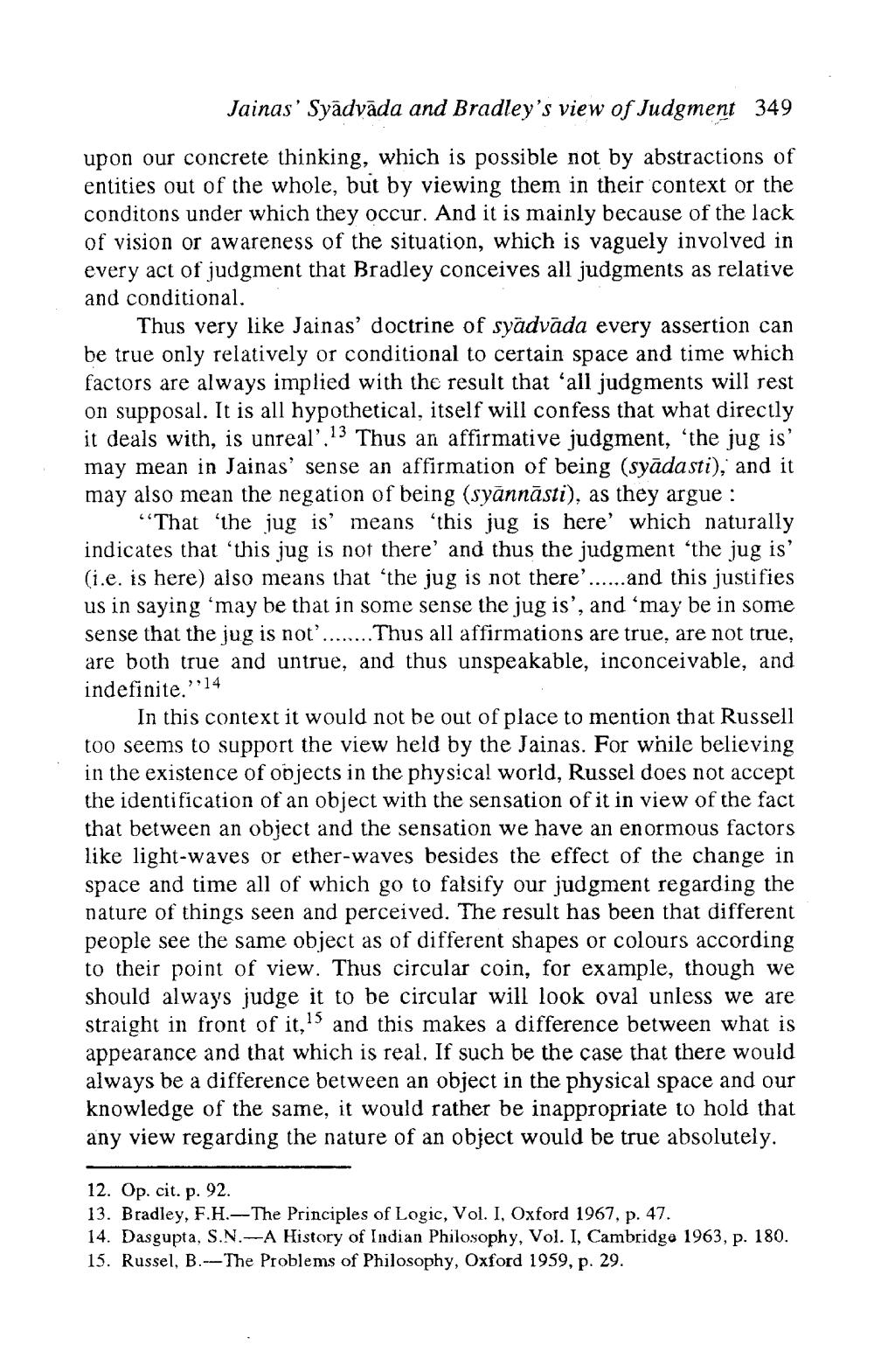________________
Jainas' Syādvāda and Bradley's view of Judgment 349
upon our concrete thinking, which is possible not by abstractions of entities out of the whole, but by viewing them in their context or the conditons under which they occur. And it is mainly because of the lack of vision or awareness of the situation, which is vaguely involved in every act of judgment that Bradley conceives all judgments as relative and conditional.
Thus very like Jainas' doctrine of syadvada every assertion can be true only relatively or conditional to certain space and time which factors are always implied with the result that 'all judgments will rest on supposal. It is all hypothetical, itself will confess that what directly it deals with, is unreal'. 13 Thus an affirmative judgment, 'the jug is' may mean in Jainas' sense an affirmation of being (syādasti), and it may also mean the negation of being (syānnāsti), as they argue :
“That 'the jug is' means "this jug is here' which naturally indicates that 'this jug is not there and thus the judgment 'the jug is' (i.e. is here) also means that 'the jug is not there'......and this justifies us in saying 'may be that in some sense the jug is', and 'may be in some sense that the jug is not .........Thus all affirmations are true, are not true, are both true and untrue, and thus unspeakable, inconceivable, and indefinite.":14
In this context it would not be out of place to mention that Russell too seems to support the view held by the Jainas. For while believing in the existence of objects in the physical world, Russel does not accept the identification of an object with the sensation of it in view of the fact that between an object and the sensation we have an enormous factors like light-waves or ether-waves besides the effect of the change in space and time all of which go to falsify our judgment regarding the nature of things seen and perceived. The result has been that different people see the same object as of different shapes or colours according to their point of view. Thus circular coin, for example, though we should always judge it to be circular will look oval unless we are straight in front of it,1s and this makes a difference between what is appearance and that which is real. If such be the case that there would always be a difference between an object in the physical space and our knowledge of the same, it would rather be inappropriate to hold that any view regarding the nature of an object would be true absolutely.
12. Op. cit. p. 92. 13. Bradley, F.H.-- The Principles of Logic, Vol. I, Oxford 1967, p. 47. 14. Dasgupta, S.N.-A History of Indian Philosophy, Vol. I, Cambridge 1963, p. 180. 15. Russel, B.--The Problems of Philosophy, Oxford 1959, p. 29.




